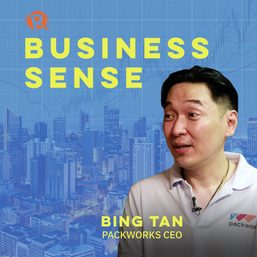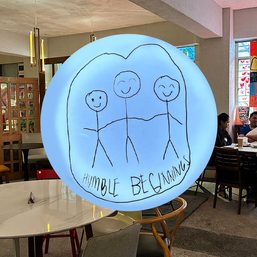SUMMARY
This is AI generated summarization, which may have errors. For context, always refer to the full article.

NEGROS OCCIDENTAL, Philippines – Weaving, with its intricate patterns and meticulous craftsmanship, is not merely a means of livelihood but a communal endeavor that binds individuals in a shared pursuit of artistry.
Facing the threat of fading traditions, a younger generation of weavers is keeping the craft alive.
Gia Faye Torado, 17, is one of the four young weavers in Barangay Camingawan, Kabankalan City. She has devoted herself to mastering the craft and encourages fellow village folks to try it out.
Tornado first got into weaving through a program by the Philippine Fiber Industry Development Authority and the Central Philippines State University (CPSU) in 2021, which trained some 30 homemakers and out-of-school youth women.

“Some might perceive our contribution to the industry as nothing, but we are just disregarding it as we are more focused on the sustainability of the project, which eyes to benefit not just today’s generation but also the next breeds of weavers to come,” she told Rappler.
But from 30, the number of trained weavers from the original batch has decreased to three, which includes Torado.
CPSU Research Services director Dr. Angelie Rose Lumba, who currently heads the university handloom center, fears the tradition will be forgotten if attempts to preserve it wane.
“I’ve seen how technology is influencing our youth, and it pulls them away from the reality of life. That explains why we chose to include young individuals with the heart towards community-building and train them,” she told Rappler.

She said these remaining young weavers have attracted their parents to join the cause and are now sitting on the loom, creating cloth.
The handloom center has increased the number of weavers to 15 – a combination of young and elderly – who are making 15 shawls and scarves a day on average.
Shawls and scarves are sold between P250 to P500 depending on the design.
Currently, the weavers use silk, cotton, and polyester threads. They are looking into using locally accessible plants that may provide a good fabric source.
“Our weavers also offer woven cloth, which can be used to create world-class apparel while keeping one’s forehead,” Lumba said. – Rappler.com
Add a comment
How does this make you feel?










There are no comments yet. Add your comment to start the conversation.